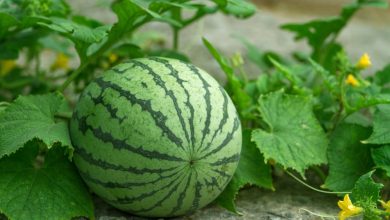Summer Flowers: [Names, List, Characteristics and Care]
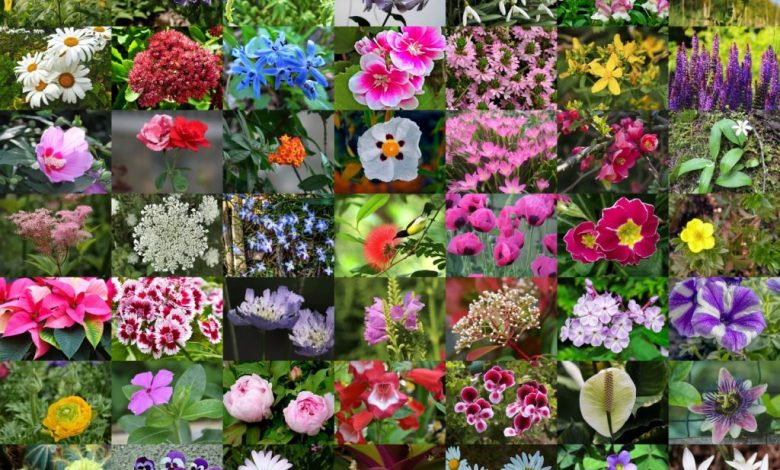
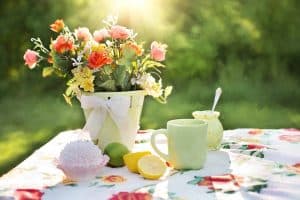 Summer is ideal for many flowers to come to light and that is the reason why there are so many summer flowers.
Summer is ideal for many flowers to come to light and that is the reason why there are so many summer flowers.
They are species that really like the sun’s rays and, therefore, need a lot of care around irrigation to be hydrated and beautiful.
Each one has its particularity in terms of shape and colours, so don’t miss out on the opportunity to have a garden that is colorful and scented during the summer.
Can you come with us?
examples of summer flowers
Sunflower
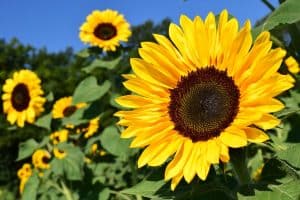 The sunflower is one of the emblematic species of summer because it needs a good amount of sun to keep its petals wide open (like the sun’s rays).
The sunflower is one of the emblematic species of summer because it needs a good amount of sun to keep its petals wide open (like the sun’s rays).
With its unique condition of following the sun, it is an ideal complement to maintain life in the garden after spring flowering.
The good news is that it is a very easy to grow and maintain species that can be grown in almost any type of terrain.
And as it gives a flower for each stem, reaching a good level of height, you can also use them to decorate the interior of your house with beautiful arrangements.
Geraniums
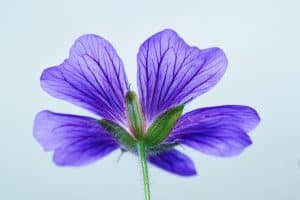 Geraniums are another of the summer flowers par excellence and are most popular for use in gardens and terraces.
Geraniums are another of the summer flowers par excellence and are most popular for use in gardens and terraces.
It is a small species, which can barely exceed 60 centimeters, so it will be easy to locate in any space.
In addition, it has different species that will give flowers of different colors such as white or pink.
And, although they are small flowers, their union in clusters makes them stand out from the rest of the plant, generating a wonderful contrast.
begonias
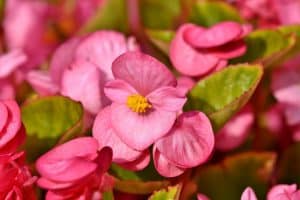 Begonias are a species that blooms in summer but, unlike what we might think, cannot be placed in direct sunlight.
Begonias are a species that blooms in summer but, unlike what we might think, cannot be placed in direct sunlight.
In fact, the idea is that the begonia, with its small size, is better used as an indoor plant and gives the house a natural touch.
These summer flowers can be found in different shades such as orange or red, so you have the opportunity to create the composition that you like the most.
It is very important to have it in a pot because, if something is certain, it is that the cold weather of winter will not support it.
Lavender
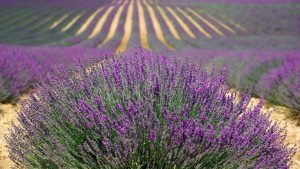 Would it be enough for you to just have a decorative summer flower or do you bet that it will also be a specimen with other uses?
Would it be enough for you to just have a decorative summer flower or do you bet that it will also be a specimen with other uses?
In case that is what you are looking for, lavender may be your ideal option because it brings with it many benefits.
It first produces lilac flowers that are pretty to look at, and since they don’t grow very large, they can be accommodated in any available space.
It also gives off a rich aroma that will perfume the entire environment and since it has medicinal properties, you can use it according to your needs.
One last positive detail is that it repels mosquitoes, so you can have your afternoon coffee without being bothered and enjoy the beautiful scenery.
petunias
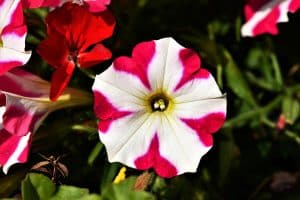 Petunias are colorful flowers that love warm climates, and it is even possible for them to bloom throughout the year in those conditions.
Petunias are colorful flowers that love warm climates, and it is even possible for them to bloom throughout the year in those conditions.
Among its main attractions is the trumpet -shaped structure that faces the outside as if looking for sunlight.
They can be of various colors and it is even possible to obtain hybrid species that mix with their base colors to give bicolor flowers.
Among the main tones that we find are violet, pink and blue.
In addition, it is a species that produces an exquisite aroma that will allow not only to liven up the visual but also the olfactory.
Finally, it is noteworthy that they live in full sun, so they can be used in the garden to beautify any corner or on the terrace, depending on your preference.
Aquilegia Vulgaris
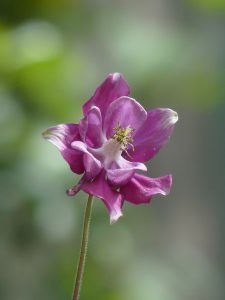 Aquilegia vulgaris is a small plant that produces showy flowers and is native to Spain.
Aquilegia vulgaris is a small plant that produces showy flowers and is native to Spain.
Its flowering usually occurs during the spring- summer period, adorning the gardens where it is planted.
As for colors, there are many varieties. They are able to be presented in a single color or also with two-color mixtures.
Of course, it is necessary to consider that it is an inedible plant, so care must be taken in the places chosen for planting.
Poppy
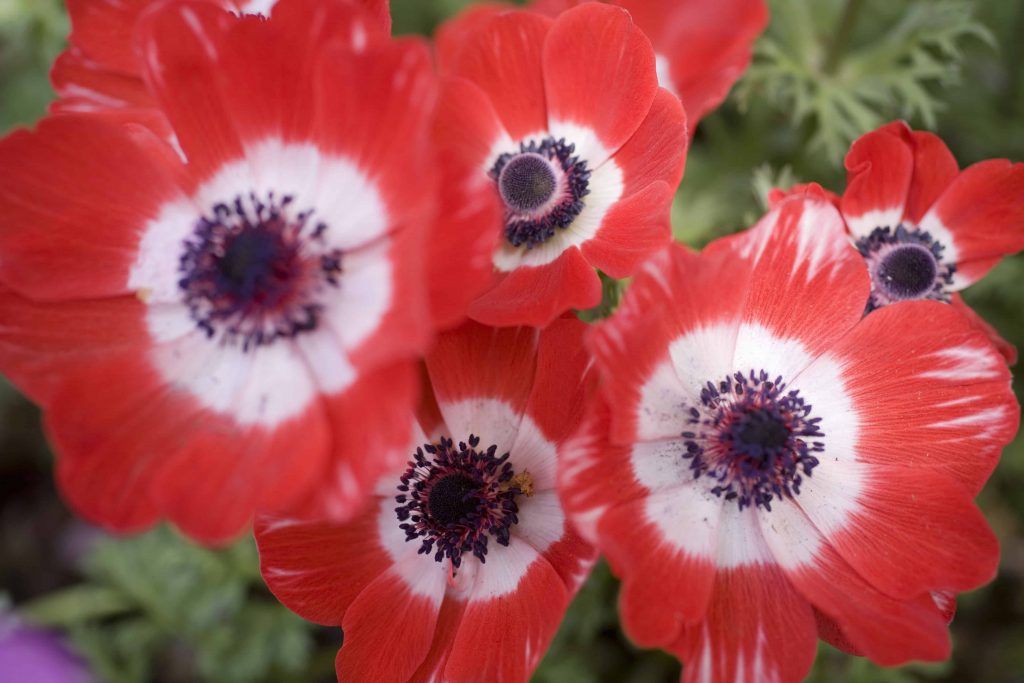
The opium poppy is a herbaceous plant that can grow to more than a meter in height with large flowers up to 15 cm wide. Not only do we like its characteristic red flowers, but also bees.
After World War I, poppy flowers began to grow everywhere. This is because the fields were barren as a result of the war, but then became rich with lime from the rubble, providing rich soil for the poppies to flourish.
It is important to note that most poppy flowers are poisonous to some degree. This species contains alkaloid compounds that are poisonous to both humans and domestic animals. No part of the plant should be chewed.
If you grow poppies for culinary use, the opium poppy is a good choice. The seeds can be consumed and are used to add flavor, crunch and bite to breads and pastries.
Be careful, as the seeds of many other poppy species are not edible. Also, you should not consume any other parts of the poppy plant: they are poisonous.
Summer flower care
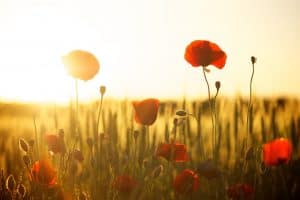 Irrigation
Irrigation
Summer flowers develop during the hottest period of the year and that makes watering them very important.
We recommend drip irrigation.
soil and substrate
Although they are generally quite resistant, and even undemanding in terms of the quality of the land where they are planted, attention must be paid to them.
If the idea is to enjoy a numerous and striking flowering, it is essential to take care that they are well fertilized and that they can have air circulation (compost, earthworm humus…).
pruning
As for pruning, this can be done at the end of winter and, preferably, only to remove the damaged parts.
In any case, it is essential to look at the particular characteristics of each species at the time of planting to offer them exactly what they need.
Characteristics of this type of flowers
 Summer flowers are usually very colorful, occupying almost all shades of the color wheel.
Summer flowers are usually very colorful, occupying almost all shades of the color wheel.
As is logical, they need high temperatures to be able to flower and that means that they do not tolerate the cold weather of winter.
It is also common for them to be very resistant to being in full sun, although there are known species that prefer warm weather but under shade.
Finally, it is important to say that some summer flowers grow in very large quantities, which makes it possible to create true ornamental compositions.
Meaning of summer flowers
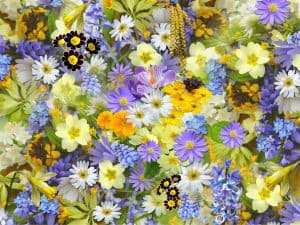 The meaning of summer flowers is oriented more to the particular characteristics of each species than to the fact that they all belong to this group.
The meaning of summer flowers is oriented more to the particular characteristics of each species than to the fact that they all belong to this group.
The reason is that the meaning is usually associated with the color of the flowers and not so much with the season in which they are produced.
However, by seasonal standards, it can be assumed that summer flowers convey warmth and closeness.
Therefore, when giving them away or having them in the garden, there is a feeling that it is a great time to be together and enjoy.
Summer flowers also teach us that life can be painted in colors even on the hottest days of the year.
What summer flower do you consider placing in your garden?
Take advantage because the color does not only have to be left for spring, because until winter it offers incredible options.
List of all the Flowers that we have published
[pt_view id=”ab19911wmy”]

![Photo of Varieties of Granada: [Characteristics and Classification]](https://www.complete-gardening.com/wp-content/uploads/2022/08/varieties-of-granada-characteristics-and-classification-390x220.jpg)

